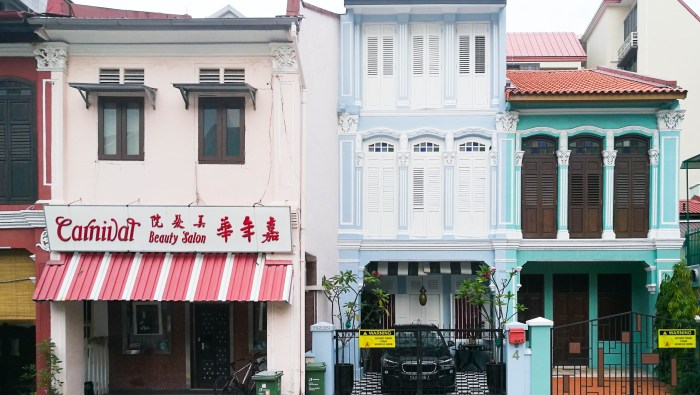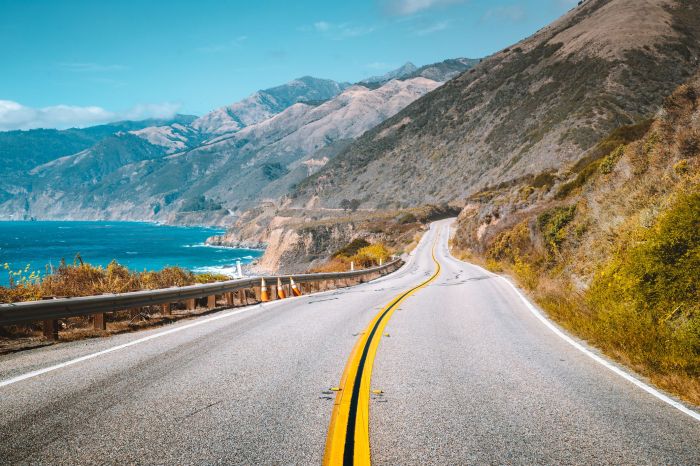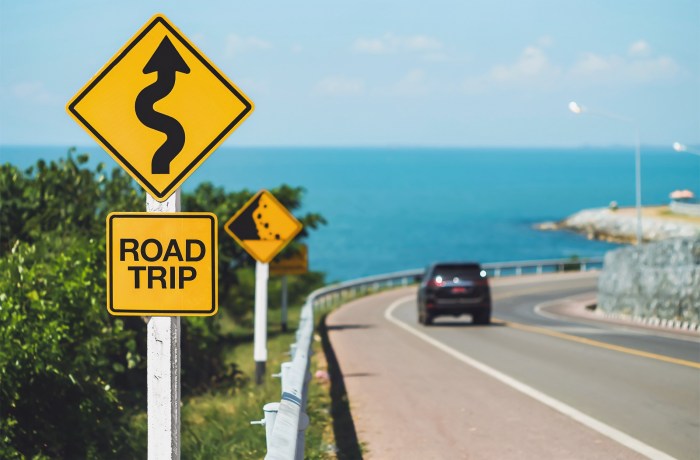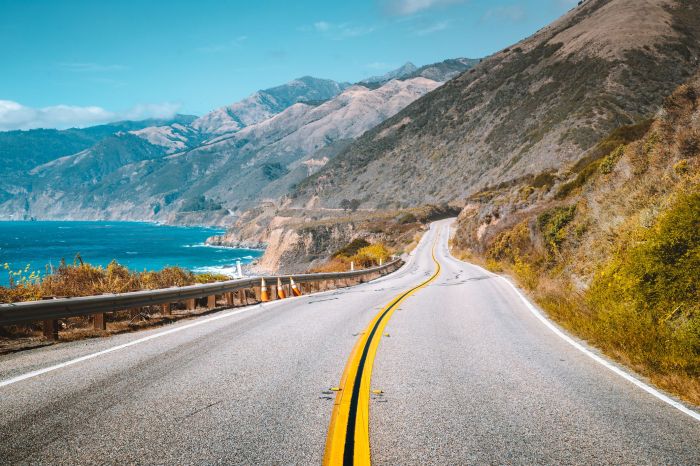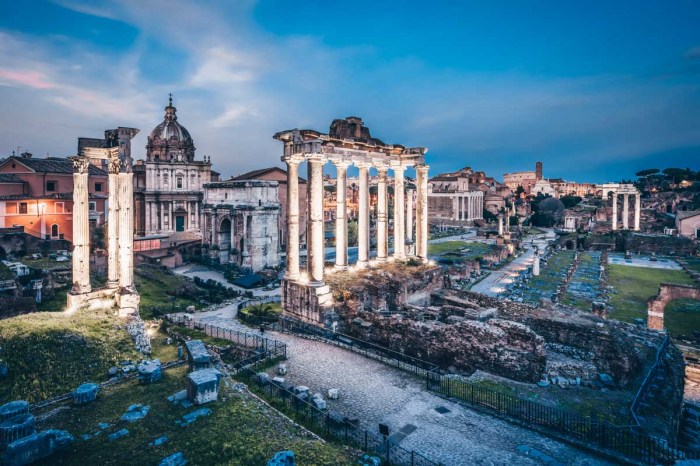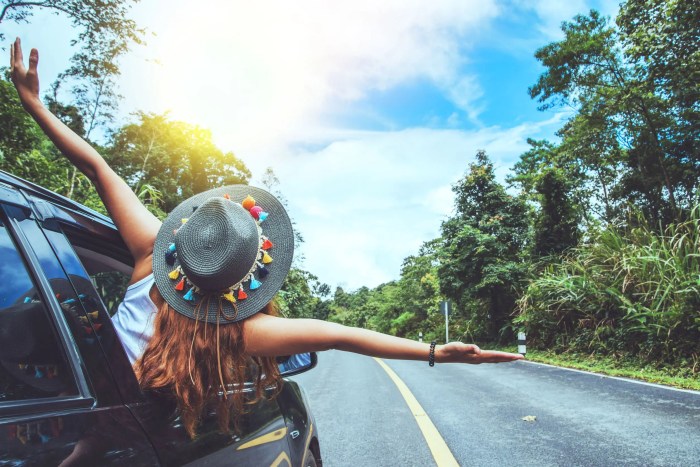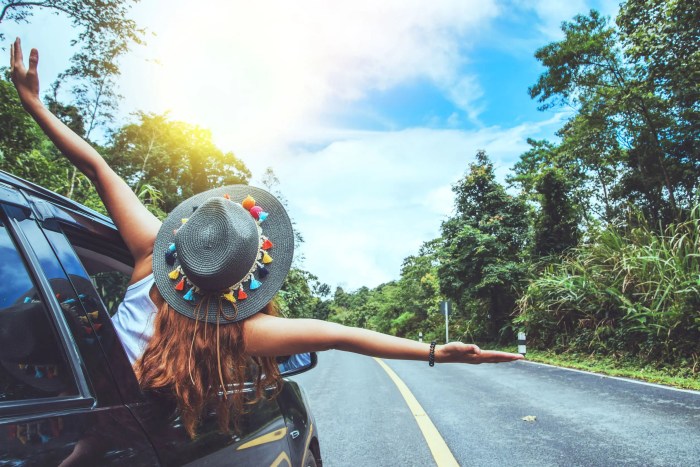Katong Singapore neighborhood guide: Embark on a vibrant journey through Katong, Singapore’s charming neighborhood. From its rich history steeped in Peranakan heritage to its bustling streets filled with delicious food and unique shops, Katong offers a captivating experience for every visitor. This guide will walk you through the neighborhood’s highlights, including accommodation options, dining experiences, attractions, shopping, nightlife, transportation, and local culture.
Get ready to discover the heart of Katong!
This comprehensive guide will delve into the essence of Katong, covering everything from its historical roots to its modern-day appeal. Discover the hidden gems and must-try experiences that make Katong a truly special place in Singapore. Prepare to be enchanted by the vibrant culture and captivating atmosphere that this neighborhood has to offer.
Introduction to Katong: Katong Singapore Neighborhood Guide
Katong, a vibrant neighbourhood nestled in the heart of Singapore, boasts a rich tapestry of history, culture, and modern charm. Beyond its iconic shophouses and hawker centres, Katong holds a special place in Singapore’s past, showcasing a unique blend of architectural styles and culinary traditions. Its evolution from a sleepy fishing village to a bustling community reveals a fascinating story of Singapore’s growth and transformation.The area’s historical roots trace back to the early 20th century, when it was a popular seaside retreat for affluent Singaporeans.
This early development laid the foundation for the unique character of Katong today, marked by its heritage buildings, charming streetscapes, and distinct atmosphere. Over time, Katong has evolved into a neighbourhood loved for its blend of traditional charm and modern amenities, attracting residents and tourists alike.
Historical Context and Evolution
Katong’s history is intertwined with Singapore’s development. Originally a fishing village, the area attracted early settlers and saw significant growth during the 1920s and 1930s. This period witnessed the construction of many of the iconic shophouses that define the neighbourhood’s character today. The arrival of Chinese and Malay communities further enriched Katong’s cultural tapestry, leading to a rich mix of influences in its architecture and cuisine.
Subsequent periods of modernization and urbanisation have shaped Katong into the bustling community it is today, while still preserving its unique charm.
Unique Character and Atmosphere, Katong singapore neighborhood guide
Katong’s atmosphere is instantly recognisable. The area is renowned for its colourful shophouses, a testament to its diverse past. The distinct blend of traditional architecture with modern elements creates a captivating ambiance. A leisurely stroll through Katong’s streets is a sensory experience, filled with the sights and sounds of local life. The warm, inviting atmosphere is further enhanced by the fragrant aroma of local cuisine wafting from hawker stalls and restaurants.
Key Attractions and Activities
Katong offers a diverse range of attractions and activities for visitors. From exploring the historic shophouses to indulging in delicious local cuisine, the neighbourhood caters to a wide range of interests. The vibrant street scene, adorned with colourful murals and decorations, is a delight for photography enthusiasts. Exploring the local markets and enjoying a meal at a traditional hawker centre are key experiences to immerse oneself in the local culture.
Planning a trip to Katong, Singapore? This vibrant neighborhood offers everything from delicious hawker food to stunning beaches. Recent news about the Norwegian Cruise Line and COVID-19, however, has some travelers reconsidering their cruise plans. For up-to-date information on the Norwegian Cruise Line coronavirus situation, check out this resource: norwegian cruise line coronavirus. Regardless, Katong still promises a fantastic Singaporean experience.
Don’t miss the chance to explore its local shops and vibrant culture!
Neighborhood Highlights
| Neighborhood Name | Brief Description | Key Feature | Image Description |
|---|---|---|---|
| Katong | A vibrant neighbourhood in Singapore, renowned for its colourful shophouses and rich history. | Colorful shophouses, a blend of traditional and modern elements. | A vibrant street scene in Katong, featuring colourful shophouses and bustling activity. The image showcases the neighbourhood’s lively atmosphere and the stunning hues of the buildings. |
| Katong Shopping Centre | A popular shopping destination in Katong. | Modern shopping mall in a traditional setting. | A view of the Katong Shopping Centre, showcasing its modern architecture and entrance. The image captures the contrast between the traditional and contemporary aspects of the neighbourhood. |
| Katong Laksa | A local favourite with diverse stalls. | A culinary destination offering various types of laksa. | A close-up view of a laksa stall in Katong, showcasing the vibrant colours and textures of the dish. The image highlights the culinary offerings of the area. |
| Katong Park | A tranquil park amidst the bustling neighbourhood. | A green oasis providing respite from the city’s hustle. | A scenic view of Katong Park, with lush greenery, pathways, and benches. The image depicts a peaceful setting within the vibrant neighbourhood. |
Accommodation Options
Katong’s charm extends beyond its vibrant streets and delicious hawker fare. The neighborhood offers a diverse range of accommodations to suit every traveler’s needs and budget, from cozy guesthouses to luxurious hotels. This section delves into the various options available, highlighting their unique characteristics and suitability for different types of travelers.Finding the perfect place to stay is crucial to maximizing your Katong experience.
Whether you’re seeking a romantic getaway with your partner, a family-friendly vacation, or an adventurous solo trip, Katong’s accommodation options cater to a variety of preferences. Understanding the differences in price range, amenities, and location is key to making an informed decision.
Types of Accommodation
Katong boasts a variety of lodging options to cater to diverse needs and preferences. From budget-friendly guesthouses to upscale hotels, the choices range widely. This diversity allows travelers to find a place that aligns perfectly with their travel style and financial situation.
- Hotels: Katong offers a selection of hotels, varying from basic to luxury. These hotels often provide a wide array of amenities, such as swimming pools, gyms, and restaurants. The larger hotels frequently have more extensive facilities and services.
- Guesthouses: For a more intimate and often budget-friendly experience, guesthouses are a good choice. These typically offer comfortable rooms and a homely atmosphere. They might not have the extensive facilities of hotels but often provide a more personal touch.
- Apartments: Apartments provide more space and kitchen facilities, ideal for families or groups traveling together. They offer greater flexibility and privacy, and can be a cost-effective option for longer stays.
- Serviced Apartments: These offer a balance between the comfort of an apartment and the convenience of a hotel. They often have kitchens and living areas, alongside hotel-style amenities like housekeeping services.
Comparison of Accommodation Options
This table provides a comparative overview of different accommodation types in Katong, focusing on price range, amenities, and guest reviews.
| Accommodation Type | Price Range | Amenities | Guest Reviews |
|---|---|---|---|
| Budget-friendly Guesthouse | SGD 50-150 per night | Basic rooms, shared bathrooms, sometimes breakfast included | Clean, convenient, and great value for money |
| Mid-range Hotel | SGD 150-300 per night | Comfortable rooms, swimming pool, restaurant, fitness center | Pleasant stay, good location, friendly staff |
| High-end Hotel with Rooftop Pool and Spa | SGD 300+ per night | Luxurious rooms, rooftop pool, spa, fine dining, 24/7 concierge | Exceptional service, stunning views, premium experience |
| Serviced Apartment | SGD 150-400+ per night | Kitchen, living area, separate bedrooms, laundry facilities, housekeeping | Spacious and comfortable, ideal for families or longer stays |
Typical Katong Hotel Room
A typical Katong hotel room, especially a mid-range option, is likely to feature a comfortable bed, a small desk, a wardrobe, and a private bathroom. Some may also include a flat-screen TV and air conditioning. Room sizes may vary, but generally offer sufficient space for a couple or a solo traveler. The decor often reflects the local culture and architectural style of Katong.
The room’s window might offer a view of the neighborhood’s bustling streets or tranquil gardens.
Food and Dining Experiences
Katong’s culinary scene is a vibrant tapestry woven with threads of local flavours and international delights. From bustling hawker centres to cosy cafes, the neighbourhood offers a diverse range of dining options to satisfy every palate. The area’s rich history and multicultural influences are reflected in the unique blend of cuisines available, ensuring a memorable culinary adventure for visitors.Katong’s food scene is a testament to Singapore’s multicultural heritage.
So, you’re planning a trip to Katong, Singapore? This vibrant neighbourhood boasts stunning shophouses and delicious food, but if you’re craving some serious mountain adventures, check out conquering the best hut-hut hikes in Switzerland. Conquer Conk Switzerland’s best hut-hut hikes will surely inspire you, and if you get back to Katong, you’ll find a wealth of things to do and see, from hawker centres to trendy cafes, perfect for a post-hike treat.
The area boasts a delightful mix of traditional local fare, innovative interpretations of international cuisines, and everything in between. This fusion of flavours creates a truly unique dining experience that caters to a wide range of tastes.
Popular Hawker Stalls and Restaurants
Katong’s hawker centres are a must-visit for any food enthusiast. These vibrant hubs offer an affordable and authentic taste of local cuisine, where families and friends gather to savour the delicious dishes.
- Ah Huat Seafood: Known for its fresh seafood dishes, prepared with a variety of sauces and methods.
- Tian Tian Seafood: Famous for its fresh, succulent seafood, often served with a spicy kick.
- Hong Kong Milk Tea: A local favourite for its authentic Hong Kong milk tea, and other delightful treats.
- The Old School Coffee House: This cafe serves delicious local breakfast fare and coffee.
- Tiong Bahru Market: While not exclusively in Katong, this bustling market is a short distance away and a popular spot for local cuisine.
- Huat Heng Seafood: Known for its excellent selection of fresh seafood.
- Katong Laksa House: Specialising in the aromatic and flavorful Katong Laksa.
- Golden Heng: Renowned for its Hainanese Chicken Rice.
- Lim’s Seafood: Known for its fresh seafood dishes.
- Mamak Restaurant: A local favourite serving Indian and Malay cuisine.
Must-Try Dishes
Katong offers a plethora of delectable dishes that should not be missed. From the aromatic spices of local curries to the fresh flavours of seafood, there’s something for every taste bud.
- Katong Laksa: This aromatic noodle soup, with its rich broth and diverse toppings, is a true local favourite.
- Hainanese Chicken Rice: A classic Singaporean dish, perfectly cooked chicken and fragrant rice, a must-try for any visitor.
- Char Kway Teow: Stir-fried flat rice noodles, with a variety of ingredients and sauces.
- Seafood: Katong’s proximity to the sea ensures a wide selection of fresh seafood dishes.
Comparison of Popular Local Eateries
This table compares three popular local eateries in Katong, highlighting their cuisine, speciality, and ambiance.
| Restaurant Name | Cuisine | Speciality | Ambiance |
|---|---|---|---|
| Ah Huat Seafood | Seafood | Fresh, diverse seafood dishes | Bustling, lively, with a strong seafood aroma |
| Golden Heng | Hainanese | Hainanese Chicken Rice | Traditional, simple, focusing on the food |
| Katong Laksa House | Local | Authentic Katong Laksa | Casual, welcoming, with a focus on the local flavour |
Attractions and Activities
![12 BEST Things to Do in Katong, Singapore [2025 Guide] Katong singapore neighborhood guide](https://whatvis.com/wp-content/uploads/2025/06/Street-Scenes-Katong-Singapore-1024x718-1-1.jpg)
Katong, with its rich history and vibrant culture, offers a diverse array of attractions and activities for visitors of all interests. From exploring its charming shophouses to indulging in local cuisine, Katong provides a captivating experience beyond the typical tourist itinerary. This section will delve into the key attractions, their historical context, and suggest activities catering to various preferences.Katong’s allure lies not only in its beautiful architecture but also in the stories and experiences embedded within its historical landmarks.
These sites provide a glimpse into the neighborhood’s past and present, adding depth to the enjoyment of the modern attractions. The historical context is woven into the fabric of the neighborhood, creating a unique tapestry of experiences.
Key Attractions
Katong boasts a collection of captivating attractions that reflect its heritage and allure. These range from historic sites to vibrant cultural experiences, catering to diverse interests. The architectural beauty of the shophouses, coupled with the local culinary scene, create a captivating atmosphere.
Shopping Experiences
Katong’s shophouses are a testament to Singapore’s rich architectural heritage. These charming buildings, often housing a mix of local businesses and shops, offer a unique shopping experience. From traditional crafts to modern boutiques, the area provides a vibrant atmosphere for browsing and discovering unique treasures. Visitors can find a variety of items, from local crafts and souvenirs to trendy fashion and accessories.
So, you’re planning a trip to Katong, Singapore? It’s a vibrant neighborhood with a rich history and amazing food. While exploring Katong’s charming shophouses and delicious hawker centers, you might be dreaming of a luxurious getaway. For those seeking a similar level of comfort and seclusion, consider checking out some of the best luxury cabins in the USA, like the ones featured on this website best luxury cabins usa.
The cozy ambiance and stunning views of the cabins could inspire a return to the vibrant energy of Katong, with its beautiful beaches and local delights.
Sightseeing Opportunities
Katong’s picturesque streets and historical buildings offer ample opportunities for sightseeing. Visitors can explore the well-preserved shophouses, discovering stories etched into their architecture. The tranquil atmosphere and charming ambiance of Katong provide a relaxing escape from the hustle and bustle of city life. The tranquil atmosphere and beautiful scenery invite leisurely walks and photo opportunities.
Cultural Experiences
Katong offers a glimpse into Singapore’s cultural tapestry. Visitors can experience the neighborhood’s rich history and traditions through various cultural events and performances. These experiences provide a deeper understanding of the local community and traditions, adding a unique cultural layer to the visitor’s experience. Explore the local arts and crafts, participate in cultural performances, and engage with the community.
Museums, Galleries, and Historical Sites
Katong itself doesn’t have a concentrated cluster of major museums or galleries. However, the surrounding area offers access to significant historical sites and cultural attractions, such as the National Museum of Singapore. These offer a broader perspective on Singaporean history and culture. The historical context of Katong is reflected in the surrounding areas, enriching the visitor’s understanding of Singapore’s development.
Popular Attractions Table
| Attraction Name | Description | Opening Hours | Ticket Price |
|---|---|---|---|
| Katong Shopping Street | A vibrant street lined with shophouses, offering a variety of local and international shops. | Typically open daily, varying by shop. | Variable, depending on the shop. |
| Katong Park | A tranquil park offering a peaceful escape from the city bustle. | Open daily, varying hours. | Free entry. |
| National Museum of Singapore | A comprehensive museum showcasing Singapore’s history and culture. | Check the museum’s website for hours. | Variable, depending on exhibits and access. |
Sample Itinerary for a Day Trip to Katong
A day trip to Katong can be tailored to individual interests. Here’s a sample itinerary for a balance of sightseeing and cultural immersion:
- Morning (9:00 AM – 12:00 PM): Start your day with a leisurely stroll down Katong Shopping Street, browsing through the local shops and admiring the historic shophouses. Enjoy a delicious local breakfast at one of the many cafes.
- Afternoon (12:00 PM – 4:00 PM): Indulge in a traditional Katong lunch, sampling local delicacies. Visit Katong Park for a relaxing break in the greenery, taking in the tranquil atmosphere.
- Late Afternoon (4:00 PM – 6:00 PM): Explore the surrounding area and visit the National Museum of Singapore, immersing yourself in Singapore’s rich history and culture. Depending on the museum’s hours, this could be a great way to wrap up the day.
- Evening (6:00 PM onwards): Enjoy a delectable dinner at one of Katong’s renowned restaurants, savoring the flavors of Singaporean cuisine.
Shopping and Retail
Katong’s vibrant atmosphere extends beyond its culinary scene to encompass a unique and engaging shopping experience. From local crafts to fashionable finds, the neighborhood offers a diverse array of retail options catering to various tastes and budgets. This exploration dives into the treasures hidden within Katong’s shops and streets.The shopping landscape in Katong reflects the area’s multicultural heritage and its focus on community.
You’ll discover a mix of independent boutiques, traditional shops, and larger retail chains, each adding its own flavor to the neighborhood’s charm. The variety in offerings, combined with the relaxed atmosphere, creates a truly memorable shopping experience.
Shopping Opportunities
Katong offers a plethora of shopping opportunities, ranging from small, family-run businesses to larger, established stores. This diverse range caters to a wide variety of needs and interests, ensuring something for everyone. The atmosphere is generally relaxed and friendly, creating a welcoming environment for browsing and purchasing.
Types of Shops and Stores
Katong’s shops showcase a delightful mix of goods. You’ll find traditional souvenir shops filled with local crafts and memorabilia, as well as boutiques featuring contemporary fashion trends. There are also numerous small, independent stores selling unique gifts, home décor items, and personal care products. This diverse range ensures there’s something for everyone.
Unique Shopping Experiences
The unique shopping experience in Katong stems from its blend of traditional and modern elements. Browsing through local craft shops allows for a deeper connection with the area’s culture, while discovering hidden gems in independent boutiques provides a touch of surprise and discovery. The relaxed atmosphere encourages a leisurely exploration, making the experience enjoyable and memorable.
Top 5 Souvenir Shops in Katong
Finding the perfect souvenir to remember your Katong adventure is easy. Here are five prominent souvenir shops, each offering a unique selection of items:
- Katong Treasures: This shop boasts a wide selection of handcrafted souvenirs, from intricate wood carvings to beautifully painted ceramics. The items often reflect traditional Singaporean art forms.
- The Katong Emporium: A one-stop shop for a diverse range of souvenirs, from decorative items to clothing, reflecting Singaporean and Asian culture.
- Singaporean Crafts Corner: Specializing in local crafts and art pieces, this shop is a must-visit for those seeking unique and authentic souvenirs.
- The Katong Corner: A popular choice for traditional gifts, offering an array of intricately designed souvenirs, including traditional masks and paintings.
- Katong Memories: This shop is known for its unique collection of personalized gifts and memorabilia, providing a personalized touch to your souvenir collection.
Finding Local Crafts or Goods
Locating local crafts and goods is straightforward in Katong. The neighborhood’s charm lies in its numerous small shops and boutiques, often clustered together. These smaller establishments are frequently the best places to discover unique items, handcrafted with care and passion. Start your exploration at the main street, and venture into the side streets for a more immersive experience.
Detailed Shop Information
This table provides a glimpse into the variety of shops and their offerings:
| Shop Name | Type of Goods | Price Range | Unique Features |
|---|---|---|---|
| Katong Crafts | Handcrafted jewelry, bags, and home décor | Mid-range | Wide selection of designs and high-quality materials |
| The Little Emporium | Souvenirs, local crafts, and clothing | Budget-friendly to mid-range | Focus on supporting local artisans |
| The Katong Boutique | Fashionable clothing, accessories, and shoes | Mid-range to high-end | Unique and stylish designs, reflecting contemporary trends |
| Singaporean Spices | Asian spices, teas, and gourmet foods | Budget-friendly to mid-range | Wide variety of spices and teas, perfect for a culinary experience |
Nightlife and Entertainment
Katong’s vibrant atmosphere extends beyond the day. As the sun dips below the horizon, Katong transforms into a hub of nightlife, offering a diverse range of experiences for every taste. From intimate bars to lively clubs, the area caters to those seeking a lively evening out.Katong’s nightlife scene is a blend of laid-back pubs and more energetic clubs. The atmosphere is typically friendly and welcoming, with a strong emphasis on socialising.
This makes it a great choice for those looking for a casual and enjoyable night out, or for a more lively evening filled with music and dancing.
Nightlife Venues
Katong boasts a range of venues that offer diverse entertainment options. Whether you prefer live music, cocktails, or dancing, Katong has a spot that caters to your preferences. The venues provide a welcoming environment for meeting new people, enjoying drinks, and immersing yourself in the local atmosphere.
Popular Bars and Clubs
Katong offers a variety of bars and clubs, each with its unique atmosphere and style. This section provides a glimpse into the types of nightlife experiences Katong offers.
| Bar Name | Type of Music | Atmosphere | Dress Code |
|---|---|---|---|
| The Rusty Mug | Live Jazz & Blues | Intimate, relaxed | Casual |
| The Katong Bar | Pop, R&B | Lively, social | Smart Casual |
| Club Fusion | House, EDM | Energetic, dancing | Smart Casual |
| The Velvet Room | Chill Lounge, Acoustic | Sophisticated, romantic | Smart Casual |
This table provides a starting point for exploring Katong’s nightlife. Remember to check opening hours and specific event details before heading out.
Transportation and Getting Around
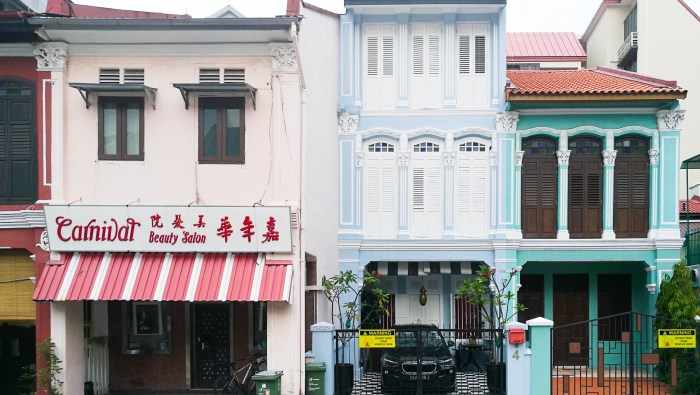
Katong’s charm lies in its walkability, but efficient transport links are essential for exploring beyond the immediate area. This section details the best ways to reach and navigate Katong, covering public transport, taxis, and walking routes.Katong’s vibrant atmosphere is best experienced by combining the ease of public transport with the charm of exploring on foot. Whether you’re travelling from the city centre or venturing to nearby attractions, Singapore’s efficient transport system ensures a smooth and convenient journey.
Getting to Katong
Katong is easily accessible from various parts of Singapore. The proximity to the MRT system makes it a convenient location to reach.
- From the City Centre: The East-West Line provides the most direct route. Alighting at the Joo Chiat station, a short taxi or bus ride is required to reach the heart of Katong.
- From the Airport: The Changi Airport MRT station offers direct access to the North-East Line, enabling you to reach Katong via a transfer to the East-West Line. Travel time varies based on the specific line and station. Consider the train travel time and transfer time to ensure your journey.
- From other areas: Various bus routes connect Katong to other parts of Singapore, offering a more affordable and flexible option for those looking to reach the neighbourhood from farther areas. The extensive bus network allows for efficient travel to the various parts of the city.
Public Transportation Options
Singapore’s public transport system is efficient and reliable.
- MRT: The Mass Rapid Transit (MRT) system provides a fast and convenient way to reach Katong. The East-West Line is the most direct route. Stations like Joo Chiat provide easy access to the area.
- Buses: Numerous bus routes traverse Katong, providing a more affordable and flexible alternative to the MRT. Bus routes are well-marked and easily accessible through the official transport website.
- Taxis: Taxis are readily available for a more direct and convenient journey. They can be hailed from the roadside or booked through ride-hailing apps.
Specific Directions to Katong
- From Orchard Road: Take the East-West Line to Joo Chiat MRT station and transfer to a bus or taxi to Katong.
- From Chinatown: Use the North-East Line to reach the East-West Line and then to Joo Chiat. From there, a short taxi or bus ride is necessary.
- From Sentosa Island: The MRT system connects Sentosa Island to the city centre and provides convenient access to the East-West Line, enabling a swift journey to Katong.
Navigating Katong on Foot
Katong’s charm lies in its walkability. Exploring the area on foot allows you to discover hidden gems and soak in the local atmosphere. Many of the key attractions are within a reasonable walking distance from each other.
- Walking is the best way to experience the neighbourhood’s charm. The streets are pedestrian-friendly and the shops, restaurants, and attractions are closely situated.
- Plan your walking routes in advance. This ensures that you don’t miss out on any of the key attractions.
- Use maps and navigation apps. This is an excellent way to avoid getting lost.
Transportation Options Table
| Transportation Option | Cost | Frequency | Estimated Travel Time |
|---|---|---|---|
| MRT | SGD 1.50 – 3.00 (depending on distance) | Frequent (every few minutes) | 15-30 minutes (depending on origin and destination) |
| Bus | SGD 1.00 – 2.00 (depending on distance) | Frequent (every 10-20 minutes) | 20-45 minutes (depending on route and traffic) |
| Taxi | SGD 10.00 – 20.00 (depending on distance and traffic) | Available | 10-20 minutes (depending on traffic) |
Local Culture and Customs
Katong’s vibrant community is a testament to its rich cultural tapestry, blending traditional values with modern influences. This neighbourhood fosters a strong sense of belonging and offers a unique glimpse into Singaporean heritage. Understanding the local customs and etiquette allows visitors to fully immerse themselves in the authentic Katong experience.The community atmosphere in Katong is generally warm and welcoming, with residents often engaging in friendly interactions.
Respect for elders and community values is deeply ingrained, creating a harmonious environment for both locals and visitors.
Social Etiquette and Norms
Katong, like other Singaporean neighbourhoods, emphasizes respect for elders and authority figures. Showing deference and politeness is crucial in social interactions. Queueing patiently and observing polite conversational cues are important aspects of social etiquette. These practices create a respectful and orderly environment within the community. Additionally, mindful consideration for personal space is essential.
Local Traditions and Celebrations
Katong, like Singapore as a whole, celebrates a wide array of festivals and traditions. These celebrations often feature cultural performances, food stalls, and communal gatherings, offering a unique opportunity to experience local customs. While many of these traditions have evolved over time, they continue to play an important role in shaping the cultural identity of the community.
Importance of Respecting Local Customs
Showing respect for local customs is essential for fostering positive interactions and creating a welcoming environment for everyone. Understanding and adhering to local norms demonstrates consideration and appreciation for the community’s traditions and values. This consideration is vital for promoting harmony and mutual understanding.
Community Atmosphere
The community atmosphere in Katong is typically described as warm and welcoming. Residents often engage in friendly interactions, fostering a strong sense of community spirit. This close-knit atmosphere is evident in the neighbourhood’s social gatherings and communal events. The friendly environment is conducive to both locals and visitors to feel welcome and integrated into the community.
Practical Information
Katong, with its vibrant culture and bustling atmosphere, offers a wealth of experiences for visitors. However, a little preparation goes a long way to ensure a smooth and enjoyable trip. This section details essential information for navigating the neighborhood with ease. From emergency contacts to local regulations, this guide provides the practical details you need.Planning ahead can significantly enhance your Katong adventure.
Knowing the local regulations and emergency procedures empowers you to make informed decisions and stay safe. This section also includes information on nearby attractions and essential details for a stress-free visit.
Emergency Contacts
Knowing who to contact in case of an emergency is crucial. These numbers are essential for immediate assistance.
- Singapore Police Force: 999
- Singapore Ambulance: 995
- Singapore Fire Department: 995
- Other emergency numbers are available on the official Singapore government website.
Local Regulations
Singapore is known for its meticulous regulations and adherence to public order. Understanding these regulations ensures a positive experience for everyone.
- Smoking is prohibited in designated areas. Be mindful of signage indicating no-smoking zones.
- Littering is strictly prohibited. Dispose of waste responsibly in designated bins.
- Respect for local customs and traditions is highly valued. Dress modestly when visiting temples or religious sites.
Nearby Attractions
Katong is conveniently located near several other attractions. Exploring these locations can add depth to your trip.
- East Coast Park: A popular spot for recreation, offering scenic views, walking paths, and various activities.
- Paya Lebar Quarter: A vibrant commercial hub with diverse shopping options, dining experiences, and entertainment venues.
- Changi Airport: A world-renowned airport with convenient connections to destinations worldwide. This location might be relevant if you’re considering a day trip.
Tourist Information
This section provides crucial information for tourists visiting Katong. Knowing these details enhances your experience.
- Currency: Singapore Dollar (SGD)
- Language: English is widely spoken.
- Visa Requirements: Ensure you have the necessary visa documentation before your trip.
Specific Local Regulations or Requirements
This table summarizes key local regulations and requirements for visitors.
| Information Type | Details | Contact Information | Relevant Links |
|---|---|---|---|
| Smoking Regulations | Smoking is prohibited in most indoor spaces and certain outdoor areas. | Singapore Ministry of Health | [Link to Singapore Ministry of Health page on smoking regulations] |
| Waste Disposal | Proper disposal of waste is mandatory. Use designated bins. | National Environment Agency (NEA) | [Link to NEA website on waste management] |
| Public Order | Adhere to public order guidelines and respect local customs. | Singapore Police Force | [Link to Singapore Police Force website] |
Conclusive Thoughts
In conclusion, Katong Singapore neighborhood guide provides a detailed exploration of this captivating neighborhood. From the historic charm to the modern conveniences, this guide serves as your essential companion for a memorable Katong adventure. Enjoy the delicious food, explore the unique shops, and immerse yourself in the local culture. We hope you’ll find this guide a helpful tool for planning your next visit to Katong!
